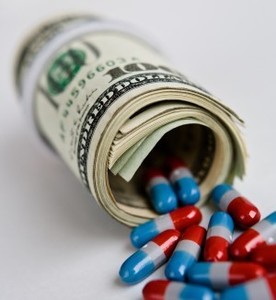Generic prescription drug prices have been escalating rapidly in the US. In 2014, generic drug prices increased by 38% on average. Public outcry has led to a flurry of legislative proposals, and two federal bills were introduced in 2017 to improve price transparency and identify drugs exhibiting outlier ‘price spikes’, however, both remain unenacted. In the first three months of 2018, 53 drug pricing transparency bills were initiated in 23 state legislatures.
Escalating prices of generic drugs in the US
Generics/Research
|
Posted 15/03/2019
 0
Post your comment
0
Post your comment

Conti and colleagues examined annual generic prescription drug price levels and changes in the US between 2013 and 2014 using IQVIA Health Incorporated’s National Sales Perspectives data [1]. Annualized inflation-adjusted mean and variance for prescription price changes for all generic drug products during this period were calculated, as well as the percentage of products exceeding the growth in the medical consumer price index (CPI), and in excess of 15% or 20% as per outlier penalty thresholds proposed by legislation. Logistic regression models were fitted to identify characteristics of drugs associated with each category of price increase.
In total, 6,182 generic drug products supplied by 378 manufacturers were included in the sample. Approximately 50% of these products experienced price increases in excess of the growth in the medical CPI, while 28% of products exceeded the 15% price increase threshold and 23% of products exceeded the 20% threshold. The mean inflation-adjusted price increases for products exceeding the medical CPI, 15% and 20% thresholds were 93%, 162% and 191%, respectively.
Injectable products were by far the most expensive per unit while orals were the least expensive (mean price US$133.76 versus US$2.63, respectively). Branded had prices over 13 times higher than unbranded generics, and products with an orphan drug designation had prices over 15 times higher than non-orphan products.
Results of the logistic regression showed that drugs exceeding outlier thresholds had lower baseline price levels than the mean price level of all generic drugs. The number of manufacturers was associated with higher price increases, and the characteristic that most consistently predicted whether a product would exceed an outlier penalty threshold was being supplied by a single manufacturer.
Overall, 13% of generic drugs had price increases of greater than 20% between 2013 and 2014, demonstrating that a higher proportion of generic drugs experienced ‘price spikes’ than suggested by media and legislative hearings. Rising drug prices indicate that current policies need to be revisited.
Conflict of interest
The authors of the research paper [1] declared that there was no conflict of interest.
Related articles
Generics prices increase when competition decreases
Policies to address price rises in old generics
Reference
1. Conti RM, Nguyen KH, Rosenthal MB. Generic prescription drug price increases: which products will be affected by proposed anti-gouging legislation? J Pharm Policy Pract. 2018;11:29. doi:10.1186/s40545-018-0156-8
Permission granted to reproduce for personal and non-commercial use only. All other reproduction, copy or reprinting of all or part of any ‘Content’ found on this website is strictly prohibited without the prior consent of the publisher. Contact the publisher to obtain permission before redistributing.
Copyright – Unless otherwise stated all contents of this website are © 2019 Pro Pharma Communications International. All Rights Reserved.
Most viewed articles
The best selling biotechnology drugs of 2008: the next biosimilars targets
Global biosimilars guideline development – EGA’s perspective
Related content
Japan’s drug shortage crisis: challenges and policy solutions
Saudi FDA drug approvals and GMP inspections: trend analysis
Generic medications in the Lebanese community: understanding and public perception
Community pharmacists’ understanding of generic and biosimilar drugs: Lebanon case study
Generic medications in the Lebanese community: understanding and public perception

Generics/Research Posted 23/01/2024
Community pharmacists’ understanding of generic and biosimilar drugs: Lebanon case study

Generics/Research Posted 08/09/2023
The best selling biotechnology drugs of 2008: the next biosimilars targets








Post your comment